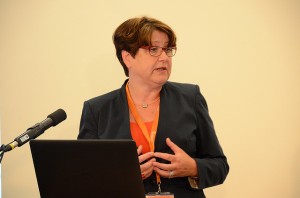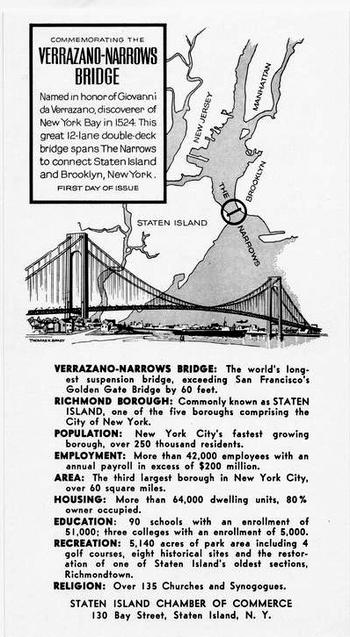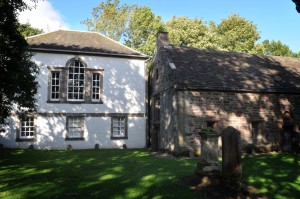We mark the 50th anniversary of the passing of the 100th Mayor of New York City with a look at his 1948 lampooning by City Hall reporters.
The hijinks and revelry of the Inner Circle Club’s annual show in 1948, A Streetcar Framed O’Dwyer, gave little hint of the great scandal—and the enduring gangland mystery—that was soon to envelop its title character.
The “Inner Circle” is the fraternity of city hall reporters who famously gave us Rudy Giuliani in a dress. For over a hundred years now—their predecessor organization, “the Amen Corner,” dates back to 1898—they have put on an annual revue skewering the latest unfortunate in the mayor’s office, and other leading political figures. “A Streetcar” refers to A Streetcar Named Desire, the groundbreaking Tennessee Williams play headlined by Marlon Brando that was setting Broadway on fire at the time. O’Dwyer was Mayor William O’Dwyer, the 100th mayor in the city’s history, though as alluded to here he was too ill to attend the festivities, still recovering from what was thought to be a heart attack.
O’Dwyer (1890-1964) seemed to be a great American success story. Born in County Mayo, Ireland, arriving in the Bronx nearly penniless after dropping out of a seminary in Salamanca, in Spain, he worked as a grocery errand boy, a hod carrier on construction sites (including the Woolworth Building), a stoker of ship furnaces, and then as a beat cop along the Brooklyn waterfront. He went to law school at night to earn his degree, built a private practice, and—as the Inner Circle show mentions—served the public as a Kings County judge, and then Brooklyn district attorney.

As DA, he succeeded in sending no fewer than seven members of the notorious “Murder, Inc.” gang of mob assassins-for-hire up to “the Dance Hall,” the electric chair at Sing Sing, including Louis “Lepke” Buchalter—to this day, the only mob boss ever executed for his crimes in the United States. This success won him the nomination of the “regular Democratic party”—Tammany Hall—to run for mayor against incumbent Fiorello La Guardia in the 1941 race.
O’Dwyer lost narrowly. But during World War II, he was decorated for his outstanding work administering relief to occupied Italy, and returning to the city a hero, was elected mayor by a landslide in 1945, after “The Little Flower” chose not to run again.
By 1948, “Bill-O,” as he was nicknamed, was still a highly popular mayor, despite the many municipal problems referred to in the show: postwar inflation, a severe housing shortage, a shortage of coal (caused in part by dockyard strikes in the winter of 1947-48), the forced neglect of the city’s infrastructure during the war years, and of course the usual scramble to balance the budget. O’Dwyer was generally credited with at least doing his best to ameliorate these problems, many of which were out of his control, and his efforts would land him on the cover of Time magazine on June 7, 1948, a few months after the show.
“New York,” Time would kvell, “is the biggest, richest city the world has ever seen. Its wealth is incalculable…It is the world’s greatest port, the world’s greatest tourist attraction, the world’s greatest manufacturing city and the world’s greatest marketplace…New York is the fountain-spout of U.S. culture, the intellectual gateway to England and Europe.” It was a city that “prizes confidence and rewards brilliance,” where mica in the concrete literally made the streets sparkle at night, and where the women “shop like stalking tigresses, dress like lady spies, and walk with a provocative air.”
La plus ça change…but this was hardly an exaggeration. New York in 1948 was at the zenith of what many regard as its golden age. It had emerged from World War II as the only great world city both unbloodied and unbowed. It had become, in a sense, the world’s political capital when the United Nations moved in, and was already the de facto world capital of art, architecture, literature, medical research, finance, advertising, philanthropy, and that befuddling new medium, television.
It was still the country’s—and the world’s—greatest manufacturing center, with over one million workers toiling in 40,000 factories. It was the capital of both retail and wholesale, where one-fifth of all of the nation’s wholesale transactions took place. Forty percent of everything imported to America came through its waterfront, and it housed the headquarters of 135 Fortune 500 companies.
It was also a city where every year many thousands of individuals with little but their hopes and dreams—displaced, black agricultural workers from the South; Puerto Ricans with little English looking for jobs; traumatized refugees from war-torn Europe—came to try to find a place for themselves. New Yorkers sympathized with Mayor O’Dwyer’s attempts to run this turbulent colossus, as well as with his health problems, and his anguish over the death in 1946 of his wife (and close political advisor) of 30 years, Catherine Whelan O’Dwyer, after a long battle with cancer and Parkinson’s disease.
Bill-O briefly announced that he would not run for re-election in 1949, then decided to do so after all. He again won easily, in a three-man race. By this time, too, he had re-married, to a society woman and the most sought-after fashion model in the country, Sloan Simpson. Sloan, 26 years his junior, added a splash of glamour to his administration, and was herself featured on the cover of Life magazine, in a 1950 spread—foreshadowing Jackie Kennedy—that showed her adding art and culture to Gracie Mansion.
Then, it all came crashing down. There had always been something that seemed faintly fraudulent, or contrived, about Bill O’Dwyer —and despite his bluff exterior, he felt overwhelmed by the job. Throughout his tenure, he made crucial transfers of power to unelected individuals, particularly the already powerful Robert Moses. These abdications of public authority would have dire results for the city over the long run.
Only eight months into his second term, O’Dwyer announced that he was resigning for reasons of health, and accepting a State Department offer to become ambassador to Mexico. The O”Dwyers were given a tickertape parade by a grateful city, and at first they thrived in Mexico City. Plunging into Mexican life and culture at all levels, they were well-liked in turn.
In 1951, though, Bill-O returned to New York to answer questions from “the Kefauver Committee,” a special Senate investigative committee headed by Sen. Estes Kefauver (D-TN), to root out the influence of organized crime in American life. It was the first government investigation ever broadcast on the new medium of television, and it held Americans—particularly New Yorkers, who owned far and away the largest number of television sets in the nation—spellbound. O’Dwyer, suffering from the flu and sweating profusely under the hot camera lights, came off as evasive and dissembling.

Worse still, he could not come up with persuasive answers for his wartime meetings with Frank Costello, a leading mob figure of the time, often called “the Prime Minister of the Underworld.” The mafia, enriched by its immense Prohibition earnings, had taken a prominent role in New York politics by this time, particularly in Tammany Hall, which still controlled the local Democratic Party; and it seems likely that O’Dwyer was soliciting Costello’s support for mayor.
Still worse allegations would soon tarnish the former mayor’s reputation, especially during his time as district attorney of Brooklyn. The key witness who had helped send so many Murder, Inc., figures to their deaths was their former colleague, Abe “Kid Twist” Reles, who was thought to have killed at least 60 individuals himself, at the behest of various mob bosses. Turned “squealer” to save himself, Reles was carefully sequestered away behind a bolted steel door, in a wing of Coney Island’s Half Moon Hotel, along with three other mob snitches and a 17-man, ’round-the-clock police guard. (This bastion was immediately dubbed “Rats’ Suite” by reporters.)

Despite such precautions, Reles ended up plunging out of a ninth-story window at the Half Moon, sometime in the early morning hours of November 12, 1941. Attempts to make this seem like an escape attempt or some sort of “prank” appeared obviously faked, but with America’s abrupt entrance into the war a few weeks later the case remained unresolved.
Later evidence, though, came to closely link William O’Dwyer with William McCormack (1890-1965), a ruthless businessman who had long held almost complete control over New York Harbor. McCormack, a son of “famine Irish” immigrants, had worked his way up from a humble dock carter to the “Mr. Big” of the waterfront. Keeping a low profile, he wielded his absolute power over the docks through the corrupt International Longshoremen’s Association (ILA), and particularly the mob muscle behind this union. While the testimony of Reles had solved dozens of mob killings all over the country, he was due next to testify against Albert Anastasia, the vicious gangster in charge of enforcing McCormack’s will on the docks—a struggle depicted in the film On the Waterfront (1954), also starring Marlon Brando.
McCormack managed to evade indictment by the Waterfront Crime Commission, despite a Pulitzer-Prize winning series about the rackets there by the New York Sun, as well as other exposés. Fearing that he would not be as fortunate, O’Dwyer stayed on in Mexico City for years after his ambassadorship ended. He was divorced by Sloan Simpson, who would become entangled in a number of scandalous affairs and—perhaps more scandalously—actually learned how to bullfight in full matador regalia, her lessons detailed in a smirking Collier’s magazine.
Bill-O did not return to New York until 1960. Now 70 years old and again largely penniless, he was dependent upon the aid of his much younger brother, Paul O’Dwyer, the longtime liberal icon of city politics, who would defend his older brother’s reputation for the rest of his life. The details of just who killed Abe Reles—and on whose orders—remain the greatest unsolved mystery in mob history.
The Inner Circle show recorded above only foreshadows these tumultuous events in occasional throwaway lines. The songs are largely satirical adaptations of popular show tunes of the time, or traditional New York favorites. The acting, at that time, was still all done by the reporters themselves, whether in drag, “native” dress, or anything else. (NB: This is a long show, so we have included the timings of each segment in square brackets. See the complete listing here.)
The opening act’s title, “The First Fifty Years are the Hardest,” and its first number, “In Old New York” [5:01] ,refer to the fact that 1948 marked the 50th anniversary of New York’s “consolidation” into one great city. Prior to 1898 New York City consisted of just Manhattan and parts of the Bronx. On January 1, 1898, they were joined by the city of Brooklyn, by what would become the borough of Queens, and by Staten Island—the last, typically, unmentioned in the song.
The song includes many references to contemporary fads, events, and minor scandals. The “orange drink” mentioned refers to the proliferation of “tropical drinks,” the health craze of the time that gave us all those “Gray’s Papaya” stands. The “ALP,” is the “American Labor Party,” a city third-party at the time, started by unions and liberals disgusted by Tammany Hall’s influence over local Democrats. And the mention of “cops making book” refers to the then recent discovery that the police were wire-tapping phones in a popular bar near Ebbets Field…not to catch illegal bookmakers, but to ensure they were making their full pay-offs to the cops. Ironically, this humorous scandal would eventually burgeon into something much bigger, producing witnesses that would help bring down the O’Dwyer administration.
Grover Whalen “appears” in the next skit [8:31]. Whalen was a former Tammany police commissioner and the city’s longtime “official greeter.” Always dapper, with a small moustache and a fresh carnation in his lapel, Whalen had presided over the enthralling 1939-40 World’s Fair, and would now coordinate celebrations of the 50th anniversary of the five-borough city. This would culminate in a grand parade down Fifth Avenue…one that almost became a disaster when horses pulling an antique stagecoach bearing Mayor O’Dwyer and other dignitaries bolted away from their driver, nearly running down other marchers and wrecking the coach before an alert policeman managed to restrain the animals.
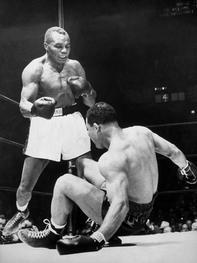
The next song, “Nearly” [11:31], includes several other topical subjects. It first alludes to the imminent doubling of the nickel subway fare, which had been five cents since the underground’s opening in 1904. (The subway, which had reached an all-time record of over 2 billion rides in 1947, would not introduce tokens until 1953.) It also mentions “Jersey Joe” Walcott, a veteran heavyweight from Merchantville, New Jersey who had just lost a split decision to champ Joe Louis that many observers felt he deserved to win. (Walcott would eventually win the title, at the age of 37, in 1951.) The World Series of 1947 had been one of the most exciting and closely fought of all time, with the Yankees (of course) prevailing over Jackie Robinson’s Brooklyn Dodgers. (Curiously, in reviewing all the events of 1947, Robinson’s breaking of the color line doesn’t seem to have interested the reporters.) Gypsy Rose Lee was the famous, and famously erudite, stripper of the time. And the coal shortage, caused in part by waterfront strikes, would in retrospect be seen as one more sign of William McCormack flexing his muscles.
“Long Island’s Winter Wonderland,” sung to the 1934 hit “Walking in a Winter Wonderland,” refers to a blizzard that left the perpetual New York punching bag, the Long Island Rail Road (LIRR)—then still a privately owned subsidiary of the Pennsylvania Railroad—all but incapacitated, and thousands of commuters stranded or even forced to sleep overnight in the stalled trains (“I’ve Been Sleeping on the Railroad”). The surprise “Great Blizzard of 1947” began Christmas night and dropped more than two feet of snow on Central Park over the next 24 hours. It caused a total of 77 deaths throughout the Northeast, and brought the metropolitan area to a standstill. It also provoked another New York perennial, as you can hear: bitter complaints over unshoveled streets. The line “ ’88 was just a flurry,” refers to the even more disruptive “Great Blizzard of 1888,” which killed some 400 people, including 200 in New York City alone.
Act III of the show, “The Iron Curtain” [34:00], moves into the emerging presidential politics of the 1948 election. The skit includes “Red Mike” Quill, the pugnacious head of the city’s Transit Workers’ Union (TWU), and a former city councilman for the American Labor Party (ALP). The Inner Circle expected him to have the TWU back a third-party effort in 1948, to be headed by Henry “Hank” Wallace.
Wallace, a brilliant agronomist and secretary of agriculture under President Franklin Roosevelt, had been dumped as Roosevelt’s vice-president in 1944 because of his far-left leanings and replaced by Harry Truman. After serving for a time as Truman’s secretary of commerce, Wallace had broken with the administration over the Cold War, and in the 1948 election would in fact try to lead the more liberal factions of the Democratic Party into his new Progressive party. Wallace’s vice-presidential nominee would be Glen Taylor (D-ID), the eccentric, guitar-strumming Senator known as “The Singing Cowboy,” who famously rode his horse up the Capitol steps when he first arrived in Washington in 1944.
Wallace was thought to have a chance to draw millions of liberal votes away from President Truman (sneered at earlier in the show as “the Alf Landon of the Democratic party,” Landon having lost all but two states as the Republicans’ presidential candidate in 1936). This was not an unfounded prediction: Leo Isacson, also “appearing” here, was about to score an upset win in a special congressional election in the Bronx as an ALP candidate and Wallace supporter, joining the famous East Harlem radical Vito Marcantonio in Congress. The humorous skit includes both congressmen asking banker J.P. Morgan for funds, and setting up shop across from the staunchly pro-establishment Union League Club.
But much like the Inner Circle, most liberals considered Wallace to be—albeit unwittingly—a dupe of the Soviet Union and Josef Stalin, presented here (in a singing role) as his “boss” [36:54]. Quill would break with his old Communist associates, and all the major unions and liberal organizations would rally around Truman over Wallace, who would receive just 2.37 percent of the popular vote—about 1.1 million votes in all, two-thirds of them from New York—and no electoral votes. Wallace would soon renounce his Cold War stance, and apologize to Truman for his run.
Making a cameo appearance here is the (long deceased) Tammany mayor, Robert Van Wyck [40:26], the first to preside over greater New York. (He was defeated for re-election after taking a massive stock payoff from an ice company.) On hand as well are some of New York’s borough leaders from 1948, including Ed Flynn, the liberal, well-read “Boss of the Bronx,” who had become a power in the national Democratic party; John Cashmore, Brooklyn Borough President, whose ineptitude would eventually aid the Dodgers in slipping out of town; and James J. Lyons, the Bronx Borough President, whose backing would prove crucial to Moses’ efforts to build the Cross Bronx Expressway.
“Mink Me Tonight” [46:55] refers to one of the few “non-scandals” of the time, or rather one created by much of the New York press, which fecklessly reported the story of an erroneous state investigation claiming that a woman with major assets, including a mink coat, and running a bookie operation out of a hotel, had been granted monthly welfare checks. Both The New Yorker and the old daily PM—which was distinguished, and ultimately doomed, for its refusal to accept ads, in order to maintain its editorial independence—had thoroughly debunked the story, proving that the woman no longer had any assets or income, no longer lived in a hotel, and was in fact a destitute single mother with one daughter. The mink in question was a crumbling, “mangy” garment officially estimated by a fur dealer to have a value of $300.
None of these facts, of course, kept most of the New York press from cheerfully asserting here that welfare recipients were all cheating the system—nor would further, bogus reports ever deter it in the years to come. The only redeeming aspect to this number was its tune, lifted from the lovely old waltz “Meet Me Tonight in Dreamland,” written in 1903 to commemorate the opening of the Dreamland amusement park in Coney Island.
“Bungle, Bungle” [49:33] is adapted from the 1947 Broadway hit “Civilization (Bongo, Bongo, Bongo),” from the musical Angel in the Wings—notable mostly because it was introduced by the late, great Elaine Stritch, making her first big splash on the Great White Way. The various Tammany “braves” are probably dressed as Indians—their own, constant conceit; Tammany was named for a semi-mythical Indian chief, “St. Tammamend”—or perhaps African tribesmen. They are determined to hunt the Republican elephant in the upcoming presidential election, although they are convinced their “Head cheese,” Harry Truman, is a “lightweight.” They worry over more defections from the Democratic party by the “Dixiecrats”—the States’ Rights Democratic Party—which would indeed secede from the Democrats’ national party, and win over 1.1 million votes, 2.4 percent of the vote, and 39 electoral votes behind presidential candidate Strom Thurmond.
The rest of the show includes various unhappy Democrats, including Wallace, former secretary of the interior Harold Ickes, and James Petrillo [59:47]. Petrillo was the publicity-hungry head of the American Federation of Musicians who had instated a recording ban that would last almost the entire year. He was also a sometimes accompanist to both President Truman, who played piano, and his daughter, Margaret Truman, whose nascent singing career would involve the president in any number of scraps. Truman seems to call to Petrillo for help. At the same time, he goes through the leading contenders for the Republican nomination—New York governor Thomas Dewey, former Minnesota governor Harold Stassen, General Douglas MacArthur, California governor and future Chief Justice Earl Warren, and Republican Speaker of the House Joseph Martin (R-MA). He hopes they will instead nominate Robert Taft, the prominent conservative senator from Ohio, who was considered too far to the right to win.
There are jokes about what a mistake it was for Peter Minuit to—legendarily—buy Manhattan from the Indians for $24, and references to meat shortages. There is a rather ugly jest suggesting that Americans are going hungry because their food is being shipped to Europeans under the Marshall Plan, and another, even uglier jibe at Truman, during a Jefferson-Jackson Day Dinner—a big Democratic gathering at the time—paying worshipful reverence to “Washington—Booker T. Washington” as the founder of his country. The reference to Booker T. Washington (1856-1915), the former slave who had worked his way up to become a university president and leading advocate for civil rights, is an echo of Dixiecrat charges that the Truman administration’s cautious moves forward in civil rights was “pandering” to black Americans.
(Truman was perhaps fortunate in their restraint. Two years earlier, a similar “send-up” of Branch Rickey’s breaking the color line in white baseball by signing Jackie Robinson had triggered a full-out, black-face, minstrely “sketch” by New York’s sportswriters in a similar revue. Neither they, nor the Inner Circle, of course, included any black reporters in their organizations.)
Truman is seen as “going back to Missouri” with the help of the new chairman of the Democratic National Convention, his advisor, J. Howard McGrath, who is also satirized as an incompetent. His replacement is sure to be Thomas Dewey, the governor of New York, whose defeat by FDR in the 1944 election was attributed partly to his remarkable stiffness. But now, he sings, “I’ll be different…I’ll be human, not like I used to be” [1:22:56].
The skits are followed by set speeches from Vincent I. Impellitteri [1:26:44] and from Dewey [1:32:58], in which both men would demonstrate the limitations of their political abilities. Impellitteri, a Sicilian immigrant, had been picked to run for the old office of President of the City Council in 1945, though at the time he was only a clerk to a State Supreme Court justice and a former assistant district attorney in the Bronx. But with O’Dwyer running for mayor, and Lazarus Joseph, a Shomer Shabbos Jew from the Lower East Side, running for comptroller, this was Tammany’s idea of a perfectly balanced ticket: Irish-Italian-Jewish; Brooklyn-the Bronx-Manhattan.
As you can hear, Impellitteri was a less than dynamic speaker, but with O’Dwyer’s sudden resignation, he succeeded to the mayoralty under the city charter of the time. Running in a special election on the “Experience Party” line in 1950, he surprised everyone by winning in his own right, in another, three-man field. More scandals loomed, though, including the widely held belief that Impellitteri was a close associate of the Lucchese crime family, and in 1953 he was defeated for re-election in the Democratic primary by Robert F. Wagner. He went on to a long career on the criminal court bench.
Thomas Dewey’s ponderous speech on the Cold War—not to mention his rather spooky laugh—gives one a perspective into the chilly public persona that ultimately held back a supremely capable public servant. Bizarrely, Dewey here seems to imply that the United States is the only place where people could “poke fun at their government,” thereby ignoring most of Europe, Canada, and other democracies around the world.
A highly successful, three-term governor of New York, and a champion of civil liberties and racial equality, following his career as a gang-busting, public attorney, Dewey would win the Republican nomination again in 1948. Despite all the best prognostications of the assembled city hall reporters here, he lost the general election in a stunning upset—to Harry Truman, who somehow managed to survive the defection of both his party’s right and left wings.
“I know them all,” Truman liked to say about the press corps in general, “and there’s not a one of them has enough sense to pound sand down a rathole.”

 revealing the actions and responses of government, administrators and the community to the comencement of the First World War a century ago.
revealing the actions and responses of government, administrators and the community to the comencement of the First World War a century ago.
![[Untitled, Anacostia family c. 1950. Smithsonian Institution]](http://hangingtogether.org/wp-content/uploads/2014/12/2422497673_445e738e30_z.jpg)
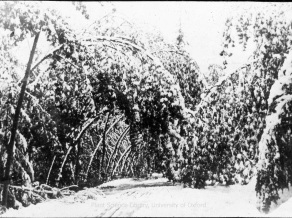















































![[Paul-Jervis Heath, Lynn Silipigni Connaway, and Jim Michalko]](http://hangingtogether.org/wp-content/uploads/2014/11/panel-three-300x125.jpg)
![[Driek Heesakkers, Paolo Manghi, Micah Altman, Paul Wouters, and John Scally]](http://hangingtogether.org/wp-content/uploads/2014/11/panel-two-300x118.jpg)
![[Anja Smit, Adam Farquhar, Antal van den Bosch, and Ricky Erway]](http://hangingtogether.org/wp-content/uploads/2014/11/14437071414_c59edfae00_z.jpg)



